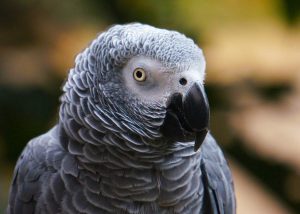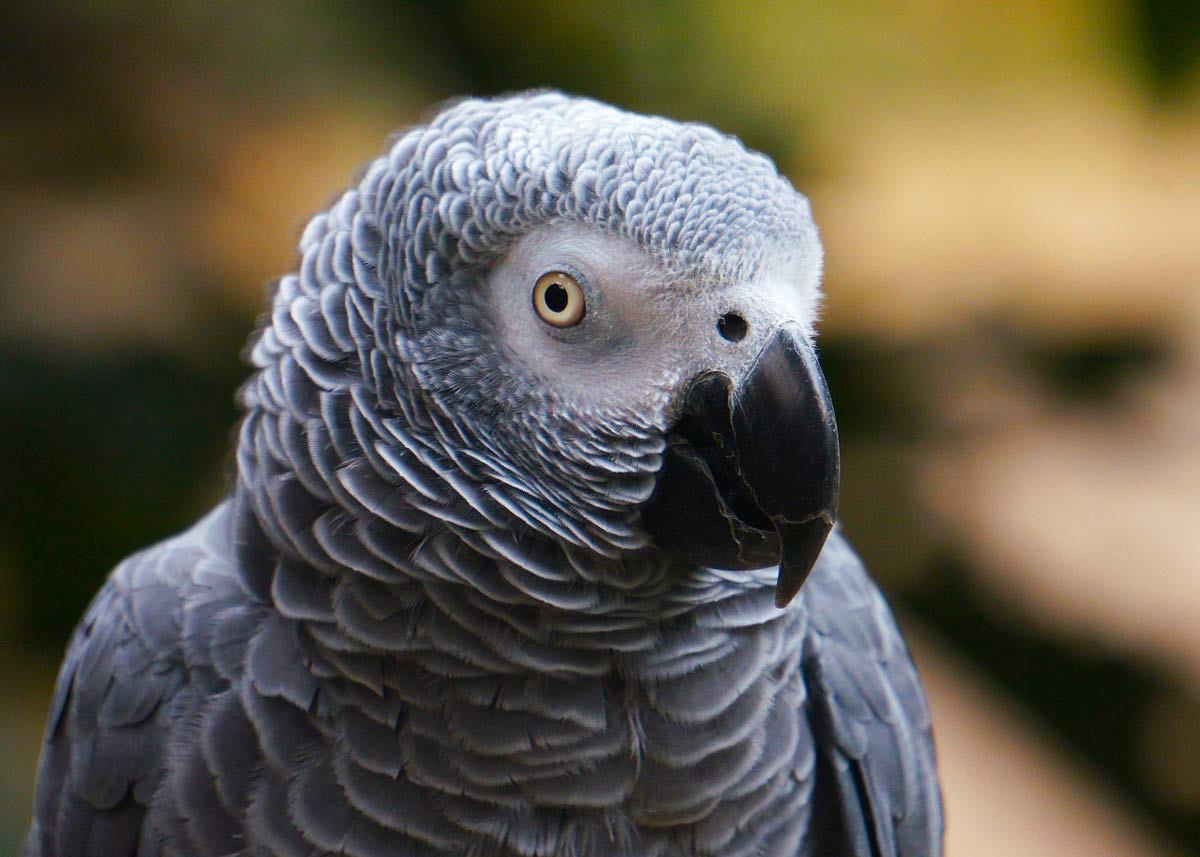 Parrots are special not only because they are vocal learners, but also because they are open-ended vocal learners, able to learn new utterances their entire lives. Of the approximately 10,000 species of birds that have been identified, a bit fewer than half, less than 5,000, learn their vocalizations. Most of these are the 4,000 songbirds—called oscines—but only a small number of these, like European starlings (Sturnus vulgaris) and canaries (Serinus canaria), can learn new songs throughout their lives. Hummingbirds also learn their songs but not beyond their youth.
Parrots are special not only because they are vocal learners, but also because they are open-ended vocal learners, able to learn new utterances their entire lives. Of the approximately 10,000 species of birds that have been identified, a bit fewer than half, less than 5,000, learn their vocalizations. Most of these are the 4,000 songbirds—called oscines—but only a small number of these, like European starlings (Sturnus vulgaris) and canaries (Serinus canaria), can learn new songs throughout their lives. Hummingbirds also learn their songs but not beyond their youth.
However, of the 350 species of parrots, all that have so far been studied do so. But not all parrots can learn the vocalizations of other species, such as human speech. Vocal learning itself is quite special, found only in humans, birds, bats, marine mammals, elephants, and possibly naked-mole rats (Barker et al., 2021). What exactly does vocal learning entail, and what is responsible for this special ability?
A Look at Vocal Learning
In general, vocal learning is not simply the ability to produce sounds. Many species do so, and do so in specific instances, such as a dog’s greeting bark versus its aggressive growl. Such species, however, do not learn their vocalizations. These utterances are innately specified and will develop in the absence of any input. The vocalizer, like the vervet monkey that uses different alarm calls in various contexts (Price et al., 2015), does need to learn the appropriate contexts for specific utterances, but not the utterance itself.
Vocal learners, in contrast, need both to hear input and hear it in the appropriate context to acquire the appropriate utterances and their appropriate uses. If raised in auditory isolation, vocal learners fail to acquire any real communicative behavior (e.g., Thorpe, 1958). If we compare species that do and do not exhibit vocal learning, we find differences in their vocal tracts (the parts of an individual’s anatomy used to produce sounds) and in a number of brain areas. It is these differences that enable the individual to learn the appropriate sounds from out of everything it hears—and learning what to ignore is just as important as learning what to acquire!—what they mean, when and how to use them, and how to produce them.
Birds’ “Song Systems”
I’m not a neurobiologist and therefore cannot discuss all the details of the changes in the avian brain that allowed the oscines and parrots to learn their utterances (for anyone who is interested, several papers by Michael Farries are referenced below), but a very simplified take-home message is that the areas responsible for such behavior evolved through the reorganization of existing areas plus the development of additional pathways in areas responsible for existing behavior; the anatomical structures controlled by these pathways could then be used in multiple ways (e.g., areas and pathways that are used to control the beak and tongue for singing evolved from those used to control the beak and tongue for eating so that these structures could be used for both activities; other areas evolved for acquisition of sound patterns, etc.).
The point is that once these areas for learning existed—known as the “song system”—such vocal learning allowed birds’ vocalizations to develop in amazing ways. For example, birds of the same species were able to adjust their repertoires into dialects so as to be heard more easily in specific ecological areas, some could expand the size of their repertoires, males and females could develop different singing styles—without going into all the possible variations, vocal learning allowed for innovation and adaptation, characteristics that release communication from rigid, innately specified responses to stimuli. And, with respect to parrots, new data (Chakraborty et al., 2015) provides evidence that (a) parrot brains uniquely contain a second song system (a shell) in addition to the core song system that they share with other avian vocal learners, (b) relative size differences occur in the core and shell regions among parrot species, and (c) parrots with a greater shell/core ratio (e.g., Greys) are those that can learn other species’ vocalizations compared to others (e.g., keas) with smaller ratios that do not.
No one really knows why certain birds like parrots are open-ended learners, but some theories about parrots involve their long lives—for example, parrots engage in specific vocal duets with their mates with whom they pair for life; however, over a long life, a bird is likely to lose a mate and then must be able to develop a new duet with a new partner. Another idea is that over their long lives, birds of various flocks might need to merge—or split—and thus acquire new dialects appropriate to the area.
Why Birds Learn To “Parrot”

Why parrots might need to be able to learn other species vocalizations is also unknown. One suggestion arises from a study of Indian Hill mynah birds (Tenaza, 1976). In India, humans set out foods in shrines that are often scavenged by monkeys; mynahs learned to reproduce the alarm calls of monkeys and used the calls to scatter monkey troops just long enough to swoop down and steal some of the food. Munn (1986) documented non-parrots that used alarm calls of other avian species to dupe them just long enough to swoop in to grab their insect prey.
Perhaps the same is true of parrots who want to grab bites of ripe fruit or nuts from other species? In the wild, African grey parrots have been documented as producing the sounds of nine different bird species and a bat (Cruickshank et al., 1992), but the authors did not suggest any reason for this behavior. Might another possibility be that a larger repertoire would make a bird a more interesting mate, because its duet would be more distinctive from those of other pairs? Or maybe it relates to the need to communicate in mixed-species flocks? Chapman et al. (1989) describe such flocks in Costa Rica but do not report any vocal behavior. In captivity, parrots generally learn human speech as a means of integrating themselves into their human “flock,” or acquire other sounds that they have observed attract the attention of their human owners.
Only further research will answer all our questions!
References
Barker, A.J., Veviurko, G., Bennett, N.C., Hart, D.W., Mograby, L., & Lewin, G.R. (2021). Cultural transmission of vocal dialect in the naked mole-rat. Science, 371, 503-507.
Chakraborty, M., Walløe, S., Nedergaard, S., Fridel, E. E., Dabelsteen, T., Pakkenberg, B., … & Jarvis, E. D. (2015). Core and shell song systems unique to the parrot brain. PLoS One, 10(6), p.e0118496.
Chapman, C.A., Chapman, L.J., & Lefebvre, L. (1989). Variability in parrot flock size: Possible functions of communal roosts. Condor, 91, 842-847.
Cruickshank, A.J., Gautier, J-P., & Chappuis, C. (1992). Vocal mimicry in wild African Grey Parrots Psittacus erithacus. Ibis, 135, 293-299.
Farries, M.A. (2001). The oscine song system considered in the context of the avian brain: lessons learned from comparative neurobiology. Brain, Behavior and Evolution, 58, 80-100/
Farries, M.A. (2004). The avian song system in comparative perspective. Annals of the New York Academy of Sciences, 1016, 61-76.
Munn, C.A. (1986). Parrots that ‘cry wolf”. Nature, 319, 143-145.
Price, T., Wadewitz, P., Cheney, D., Seyfarth, R., Hammerschmidt, K., and Fischer, J. (2015). Vervets revisited: A quantitative analysis of alarm call structure and context specificity. Scientific Report,5, 13220. doi: 10.1038/srep13220.
Tenaza, R.R. (1976). Wild mynahs mimic wild primates. Nature, 259, 561.
Thorpe, WH. (1958). The learning of song patterns by birds, with special reference to the song of the chaffinch, Fringilla coelebs. Ibis, 100, 535–570.
